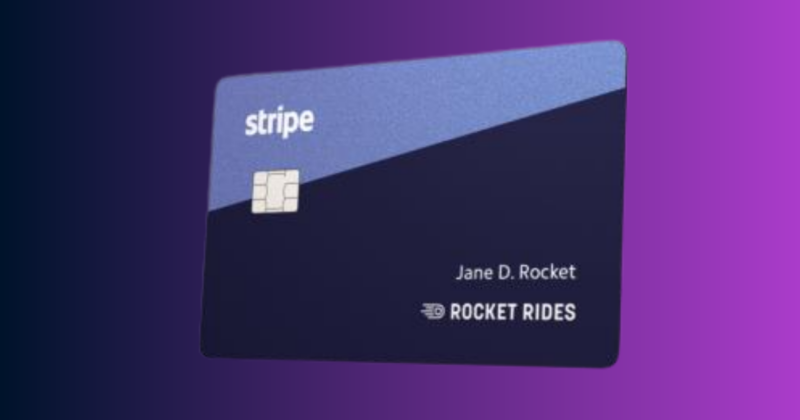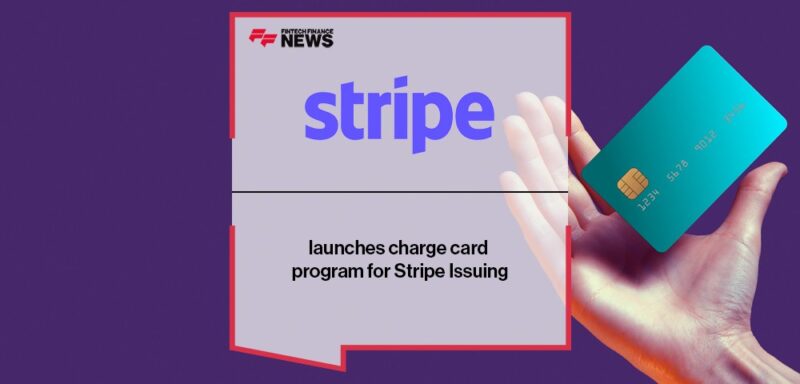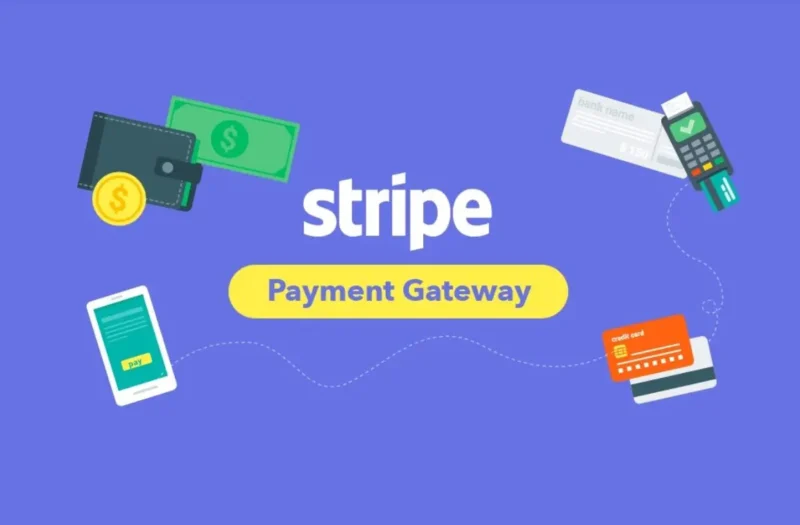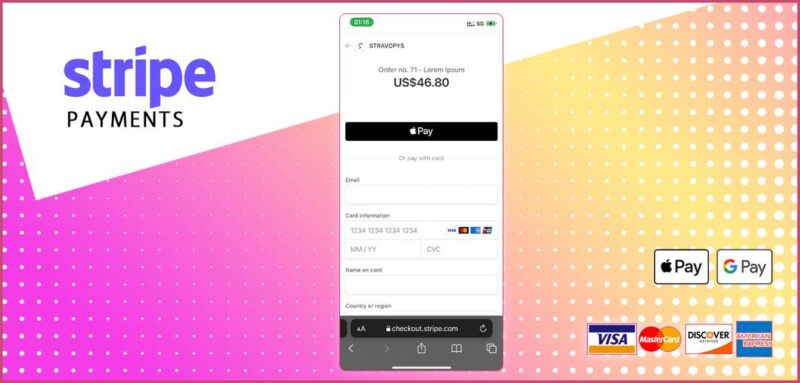Introduction
Have you ever wondered what exactly a stripe credit card charge entails? How does it work, and why is it crucial to understand the ins and outs of this payment processing system? In this article, we will dive into the world of Stripe credit card charges and shed light on why it’s essential for both businesses and customers to grasp its intricacies.
Mục lục

What is a Stripe Credit Card Charge?
A Stripe credit card charge refers to the process of initiating and completing a transaction using the Stripe payment processing system. Stripe acts as a middleman between businesses and their customers, enabling secure and seamless online transactions. By integrating Stripe into their websites or applications, businesses can accept credit card payments from customers worldwide.
Importance of Understanding Stripe Credit Card Charges
Now, you might be wondering, why should I bother understanding Stripe credit card charges? The answer lies in the numerous advantages it offers. Firstly, Stripe provides businesses with a reliable and efficient payment gateway, ensuring smooth transactions and enhanced customer experiences. By comprehending the workings of Stripe credit card charges, businesses can optimize their checkout processes, minimizing the chances of failed charges and abandoned carts.
Moreover, understanding Stripe credit card charges is crucial for preventing and handling issues that may arise during transactions. By recognizing the common problems associated with failed charges, disputed charges, and fraud attempts, businesses can take proactive measures to safeguard their customers’ interests and maintain their reputation. Additionally, having a solid understanding of refund and cancellation procedures allows businesses to handle such requests promptly and efficiently.
In conclusion, delving into the realm of Stripe credit card charges is vital for businesses and customers alike. By grasping the fundamentals of this payment processing system, businesses can provide a seamless checkout experience for their customers while safeguarding their interests. So, let’s explore the inner workings of Stripe credit card charges and equip ourselves with the knowledge to navigate this digital landscape effectively. Stay tuned for the next section, where we will delve deeper into how Stripe credit card charges work.
How Stripe Credit Card Charges Work

A. Overview of Stripe Payment Processing System
To understand how Stripe credit card charges work, let’s begin with an overview of the Stripe payment processing system. Stripe acts as a secure and reliable intermediary between businesses and their customers, facilitating online transactions. With its robust infrastructure and advanced features, Stripe has become a popular choice for businesses of all sizes.
When a customer initiates a credit card transaction on a website or application that has integrated Stripe, the payment information is securely transmitted to Stripe’s servers. Stripe then validates the card details, checking for any potential issues or fraudulent activities. Once the payment information is verified, Stripe proceeds to authorize and capture the transaction amount from the customer’s credit card.
B. Process of Initiating a Credit Card Charge through Stripe
Now, let’s delve into the process of initiating a credit card charge through Stripe. It typically involves a series of steps that ensure a smooth and secure transaction. Firstly, the customer selects their desired products or services and proceeds to the checkout page. Here, they enter their credit card details, including the card number, expiration date, and CVV code.
Once the customer submits the payment information, Stripe’s payment gateway securely transmits this data to the respective card network (Visa, Mastercard, etc.). The card network then authenticates the transaction and communicates with the customer’s issuing bank to verify the availability of funds. If approved, the issuing bank sends an authorization code back to Stripe, confirming the transaction.
C. Key Components of a Stripe Credit Card Charge
A Stripe credit card charge consists of several key components that ensure a successful transaction. These include:
- Card Details: The customer’s credit card information, including the card number, expiration date, and CVV code, is crucial for processing the charge securely.
- Payment Gateway: Stripe’s payment gateway acts as the bridge between the customer, the merchant, and the card network, securely transmitting payment information and facilitating the transaction.
- Card Network: The card network, such as Visa or Mastercard, plays a vital role in authenticating and authorizing the transaction, ensuring the availability of funds.
- Issuing Bank: The customer’s issuing bank verifies the transaction and confirms the availability of funds, sending an authorization code back to Stripe.
Understanding these components is essential for businesses and customers alike, as it enables them to navigate the Stripe credit card charge process seamlessly. In the next section, we will explore the common issues associated with Stripe credit card charges and how to address them effectively. Stay tuned!
Common Issues with Stripe Credit Card Charges

When it comes to Stripe credit card charges, there are several common issues that businesses and customers may encounter. Understanding these challenges is essential for effectively managing transactions and ensuring a smooth payment experience. Let’s explore some of the most prevalent issues and how to address them.
A. Failed Charges and their Causes
Failed charges can be frustrating for both businesses and customers. Understanding the causes behind these failures is crucial for minimizing their occurrence. Common reasons for failed charges include insufficient funds, expired cards, incorrect payment details, or technical glitches. To mitigate these issues, businesses should provide clear instructions and error messages during the checkout process. Additionally, implementing automated retries and notifying customers about failed charges can help resolve the problem swiftly.
B. Disputed Charges and Chargebacks
Disputed charges and chargebacks occur when customers dispute a transaction or request a refund directly from their credit card issuer. This can happen due to various reasons, such as unauthorized transactions, dissatisfaction with the product or service, or billing errors. To handle disputed charges effectively, businesses should have a clear dispute resolution process in place. Communication with customers, providing evidence of the transaction, and promptly addressing their concerns can help prevent chargebacks and maintain customer satisfaction.
C. Fraudulent Activities and Prevention
Fraudulent activities pose a significant threat to businesses and customers alike. Fraudsters may attempt to make unauthorized transactions or exploit vulnerabilities in the payment system. To prevent fraud, businesses should implement stringent security measures such as two-factor authentication, address verification systems, and fraud detection tools. Regularly monitoring transactions and suspicious activities can help identify and prevent fraudulent charges, safeguarding both businesses and customers.
D. Handling Refunds and Cancellations
Refunds and cancellations are a part of every business’s operations. When it comes to Stripe credit card charges, having a clear refund and cancellation policy is essential. Timely and efficient handling of refund requests can help maintain customer satisfaction and prevent chargebacks. Businesses should establish transparent refund processes, clearly communicate their policies to customers, and promptly process refunds when necessary.
In the next section, we will explore best practices for managing Stripe credit card charges, including tips to optimize the checkout process and ensure secure transactions. Stay tuned to learn how to enhance your payment processing experience.
Best Practices for Managing Stripe Credit Card Charges

Stripe credit card charges play a crucial role in the success of online businesses. To ensure seamless transactions and customer satisfaction, it is essential to implement best practices in managing these charges. Let’s explore some effective strategies to optimize your Stripe credit card charge management.
A. Ensuring Secure Transactions and Customer Data Protection
When it comes to online transactions, security is paramount. Implementing robust security measures to protect customer data is vital for building trust and maintaining a positive reputation. Ensure that your website or application is equipped with SSL encryption, which encrypts sensitive information during transmission. Regularly update and patch your systems to mitigate vulnerabilities. Additionally, consider tokenization, a process that replaces credit card numbers with encrypted tokens, reducing the risk of data breaches.
B. Optimizing Checkout Process to Reduce Failed Charges
One of the major challenges businesses face is minimizing failed charges during the checkout process. By streamlining the checkout process, you can reduce friction and increase successful transactions. Optimize your payment form by keeping it simple and user-friendly, requiring only essential information. Provide clear instructions and error messages to guide users through the payment process. Avoid unnecessary distractions or excessive steps that may lead to customer abandonment.
C. Implementing Effective Fraud Detection Measures
Protecting your business and customers from fraudulent activities is crucial. Implementing robust fraud detection measures can help prevent unauthorized transactions and chargebacks. Utilize Stripe’s built-in fraud prevention tools, such as Radar, which uses machine learning algorithms to identify potentially fraudulent activities. Set up rules and thresholds to flag suspicious transactions for manual review. Regularly monitor transaction patterns and implement additional security measures when necessary.
D. Providing Prompt Customer Support for Charge-related Queries
Excellent customer support is essential in managing Stripe credit card charges effectively. Ensure that your support team is well-trained and equipped to handle charge-related queries promptly and professionally. Respond to customer inquiries in a timely manner, providing clear and concise explanations. Offer multiple channels of communication, such as live chat or email, to cater to different customer preferences. By addressing customer concerns swiftly and efficiently, you can enhance customer satisfaction and loyalty.
In conclusion, implementing best practices for managing Stripe credit card charges is crucial for ensuring secure transactions, reducing failed charges, preventing fraud, and providing exceptional customer support. By prioritizing these strategies, businesses can optimize their payment processes, enhance customer experiences, and build a reputation for reliability and trustworthiness. In the next section, we will provide valuable tips for resolving common issues related to Stripe credit card charges.
Tips for Resolving Stripe Credit Card Charge Problems

As with any payment processing system, Stripe credit card charges may encounter occasional issues that require prompt resolution. In this section, we will explore some valuable tips to help you effectively resolve common problems that may arise during Stripe credit card charges.
A. Troubleshooting Failed Charges and Error Messages
Encountering a failed charge or receiving an error message can be frustrating for both businesses and customers. To troubleshoot such issues, start by double-checking the entered payment details, including the credit card number, expiration date, and CVV code. Additionally, ensure that the customer’s billing address matches the one linked to the credit card. If the issue persists, encourage your customers to contact their card issuer or bank for further assistance.
B. Resolving Disputed Charges and Chargebacks
Disputed charges and chargebacks can pose significant challenges for businesses. If a customer raises a dispute, it’s crucial to promptly address their concerns and provide evidence of the completed transaction or delivered service. Maintain clear and detailed documentation of the transaction and communication with the customer to strengthen your case during the dispute resolution process. Remember to adhere to Stripe’s guidelines and promptly respond to any requests for information.
C. Dealing with Fraudulent Activities and Reporting
Protecting your business and customers from fraudulent activities is paramount. Implement fraud detection measures, such as Stripe Radar, to identify and prevent suspicious transactions. If you suspect fraudulent activity, promptly report it to Stripe and provide any relevant evidence or documentation. By taking proactive steps and reporting fraudulent activities, you contribute to maintaining the integrity of the Stripe payment processing system.
D. Managing Refunds and Cancellations Effectively
Refunds and cancellations are a part of any business, and it’s essential to handle them efficiently. When processing a refund, ensure that the funds are returned to the original payment method used by the customer. Communicate clearly with the customer regarding the refund process and provide timely updates. Additionally, have a streamlined procedure in place for managing cancellation requests, ensuring a seamless experience for your customers.
In conclusion, by following these tips, you can effectively navigate and resolve various problems that may arise during Stripe credit card charges. Troubleshooting failed charges, addressing disputed charges, dealing with fraudulent activities, and managing refunds and cancellations are key aspects of maintaining a smooth payment processing experience. Stay tuned for the final section, where we will recap the essential points covered in this article and emphasize the importance of proactive management of Stripe credit card charges.
Conclusion

In conclusion, understanding and effectively managing Stripe credit card charges is paramount for businesses seeking to provide exceptional customer experiences while ensuring secure and efficient transactions. By comprehending the intricacies of the Stripe payment processing system, businesses can optimize their checkout processes, minimize failed charges, and handle disputes and fraud attempts promptly.
Throughout this article, we have explored the basics of Stripe credit card charges, delving into its working mechanism and the importance of understanding it. We have discussed the significance of secure transactions, customer data protection, and the implementation of effective fraud detection measures. Additionally, we have highlighted the need for prompt customer support to address any charge-related queries.
To excel in managing Stripe credit card charges, businesses must troubleshoot failed charges, resolve disputed charges and chargebacks, and effectively handle fraudulent activities. By implementing best practices and following industry guidelines, businesses can enhance their payment processing experience and build trust with their customers.
At erp.ebest.vn, we understand the significance of Stripe credit card charges for businesses. Our comprehensive ERP solutions provide seamless integration with Stripe, enabling businesses to streamline their payment processes and effectively manage credit card charges. With our expertise and reliable support, we aim to empower businesses to navigate the complexities of Stripe credit card charges effortlessly.
Remember, in the competitive world of online transactions, staying ahead requires a deep understanding of payment processing systems like Stripe. By staying informed, proactive, and committed to delivering exceptional customer experiences, businesses can ensure their success in the digital landscape.